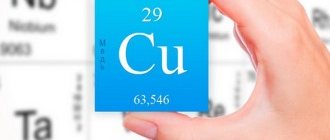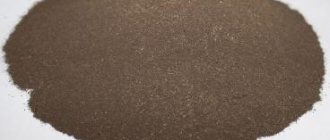Composition per tablet:
Active substance:
methionine - 250.0 mg
Excipients:
potato starch - 44.0 mg, methylcellulose - 3.0 mg, stearic acid - 3.0 mg
Excipients of the coating to obtain a tablet with a coating weighing 400.0 mg:
sucrose (sugar) - 62.486 mg, wheat flour - 18.556 mg, magnesium carbonate (light) - 18.264 mg, talc - 0.496 mg, refined sunflower oil - 0.097 mg, beeswax - 0.097 mg, azorubine dye - 0.004 mg.
Methionine tablets p/o 250 mg No. 10x5
Name
Methionine tablets of 250 mg per blister pack No. 10x5
Description
Round tablets with a biconvex surface, coated, pink. Blotches are allowed on the surface of the tablets.
Main active ingredient
D,L-methionine
Dosage
250mg
Compound
1 tablet contains D,L-methionine 250 mg; excipients: potato starch, anhydrous colloidal silicon dioxide, calcium stearate, polysorbate; shell: sugar, light magnesium carbonate, povidone, anhydrous colloidal silicon dioxide, talc, titanium dioxide (E 171), Ponceau 4R dye (E 124), yellow wax, light mineral oil.
Pharmacological properties
Methionine is an essential amino acid that is involved in remethylation processes. Chemically, methionine is converted to cysteine, a precursor to glutathione, which is involved in detoxification reactions. Has a lipotropic effect, promotes the synthesis of choline and phospholipids; participates in the synthesis of adrenaline and creatine; activates the action of hormones, vitamins, enzymes. It has detoxifying properties due to the ability to methylate toxic products. Reduces the concentration of cholesterol in the blood and increases the content of phospholipids. Easily absorbed from the intestines. As an essential sulfur-containing amino acid, it is used for protein synthesis and enters into various metabolic reactions - remethylation, deamination, decarboxylation. Excreted in urine in small quantities.
Indications
Treatment (as part of complex therapy) of diseases and toxic lesions of the liver: toxic hepatitis, alcoholic hepatopathy, liver cirrhosis, poisoning with paracetamol and other hepatotoxic drugs.
Contraindications
The drug should not be used:
- in case of hypersensitivity to the active substance or to any other component of the drug;
- with homocystinuria;
- for urate and cystine stones;
- with renal failure;
- with oxalosis;
- with methionine adenosyltransferase deficiency;
- with metabolic (eg, renal tubular) acidosis;
- babies.
Due to the risk of synthesis of neurotoxic mercaptans by bacterial metabolism, patients with liver failure or hepatic encephalopathy should not use methionine.
Cautions for use
Before using the drug, consult your doctor! Do not use the drug for longer than the specified time without consulting a doctor! If there is a deficiency of folic acid, vitamins B2, B6 and/or B12, treatment with methionine may lead to increased homocysteine levels. Hyperhomocysteinemia can be considered as an independent risk factor for atherosclerosis. With long-term use of the drug, it is necessary to follow a diet containing a sufficient amount of folic acid and B vitamins. If necessary, their deficiency should be compensated. In hyperthyroidism, the metabolism of homocysteine in the blood plasma may be accelerated, so thyroid function should be checked before starting methionine treatment. Taking methionine may lead to an increase in calcium excretion in the urine (hypercalciuria). In case of long-term treatment with methionine, it is necessary to regularly monitor mineral metabolism. In patients at risk of developing acidosis, long-term treatment with methionine should be carried out under the control of acid-base balance in the blood.
Interaction with other drugs
If you are using any other medications, be sure to consult your doctor about the possibility of taking the drug! The effect of some substances (for example, ampicillin, carbenicillin, sulfonamides, nitrofurantoin, nalidixic acid) may be enhanced due to prolonged plasma half-life. Coadministration of levodopa and methionine may reduce the effectiveness of levodopa in patients with Parkinson's disease, so increasing the dose of methionine should be avoided in such patients.
special instructions
Children. The drug should not be used in children under 12 years of age, as there is no data on adequate studies in this category of patients.
Use during pregnancy and lactation
There is no sufficient data on the use of methionine during pregnancy and lactation. Animal studies do not indicate direct or indirect harmful effects of methionine on pregnancy or embryonic development. During pregnancy or breastfeeding, the use of the drug is possible if the benefit to the mother outweighs the potential risk to the fetus/child.
The ability to influence the reaction rate when driving vehicles or other mechanisms
No data available.
Directions for use and doses
Adults are prescribed 500-1500 mg 3-4 times a day. Children single doses: 3-6 years – 250 mg, 7 years and older – 500 mg. The frequency of administration is 3-4 times a day. The drug should be taken 30 minutes - 1 hour before meals. The course of treatment is 10-30 days or 10 days each with 10-day breaks between these courses. In case of paracetamol poisoning, the following dosage is recommended: 2500 mg every 4 hours until a dosage of 10,000 mg is reached.
Overdose
Cases of acute intoxication have not been described. With prolonged overdose (about 15 g/day), atrophy of secreting organs, such as the parotid, submandibular and sublingual glands, is possible.
Side effects
A change in blood pH to the acidic side in patients at risk of developing acidosis. Nausea, vomiting, diarrhea, drowsiness, and irritability may occur. If undesirable effects occur, consult your doctor regarding further use of the drug. The drug should not be used after the expiration date.
Storage conditions
Store in original packaging at a temperature not exceeding 25 °C. Keep out of the reach of children!
Buy Methionine tablet p/o 250 mg in blister pack No. 10x5 in the pharmacy
Price for Methionine tablet p/o 250 mg in sheets in pack No. 10x5
Instructions for use for Methionine tablet p/o 250 mg in blister pack No. 10x5
Description
Round, biconvex tablets, coated with a pink film with inconspicuous inclusions. The cross section shows two layers with a noticeable boundary between them.
Pharmacotherapeutic group:
metabolic agent.
ATX code:
A05VA
Pharmacological properties
An essential amino acid, a donor of mobile methyl groups for the synthesis of choline and phospholipids, the implementation of a lipotropic effect. Participates in the synthesis of adrenaline, proteins, remethylation reactions, deamination, decarboxylation, etc. Participates in the metabolism of sulfur-containing amino acids, adrenaline, creatinine, cyanocobalamin, ascorbic and folic acids, hormones, enzymes. Has a detoxifying effect. Has a metabolic, hepatoprotective effect. Easily absorbed in the intestines, excreted in urine in small quantities.
Methionine
Methionine
Registration number: LP-002011
Trade name: Methionine
International nonproprietary name: Methionine
Dosage form: film-coated tablets.
Composition per tablet: methionine - 0.25 g. Core excipients: potato starch - 0.0382 g, stearic acid - 0.003 g, methylcellulose - 0.0034 g. Shell excipients: sucrose (sugar) - 0. 0826683 g, wheat flour - 0.00371 g, magnesium hydroxycarbonate (basic magnesium carbonate) - 0.010684 g, talc - 0.001789 g, low molecular weight povidone - 0.001088 g, azorubine dye (acid red 2C for pharmaceutical purposes) - 0.0000087 g, liquid paraffin (vaseline oil) - 0.000026 g, beeswax - 0.000026 g.
Description: Round, biconvex tablets, pink coated. Marbling is allowed. On a cross section, two layers are visible, the inner one is white.
Pharmacotherapeutic group: metabolic agent.
ATX code: [A05BA]
Pharmacological properties: Pharmacological action. Has a metabolic, hepatoprotective effect. An essential amino acid, a donor of mobile methyl groups, is necessary for the synthesis of choline, the deficiency of which is associated with impaired synthesis of phospholipids from fats and deposition of neutral fat in the liver. Participates in the metabolism of sulfur-containing amino acids, in the synthesis of epinephrine, creatinine and other biologically important compounds, activates the action of hormones, vitamins (B12, ascorbic, folic acids), enzymes, proteins, remethylation reactions, deamination, decarboxylation and others. Essential for detoxification of xenobiotics. In atherosclerosis, it reduces the concentration of cholesterol and increases the concentration of blood phospholipids. Pharmacokinetics. Easily absorbed from the intestines. It is excreted in urine in small quantities.
Indications for use: As part of complex therapy of liver diseases occurring with fatty infiltration of hepatocytes: toxic hepatitis, hepatosis (including alcoholic), cirrhosis, liver dystrophy; intoxication. Prevention of toxic liver damage from arsenic, chloroform, benzene, alcohol. As part of combination therapy: protein deficiency of various origins, atherosclerosis, diabetes mellitus.
Contraindications: Hypersensitivity, severe liver failure, hepatic encephalopathy, viral hepatitis, hereditary fructose intolerance, glucose-galactose malabsorption or sucrose-isomaltose deficiency, children under 6 years of age.
With caution: Renal failure (risk of increased hyperazotemia). Before use, consult a doctor.
Directions for use and dosage: Orally, 1/2 - 1 hour before meals, 3-4 times a day. Adults - 0.5-1.5 g. Children: from 6 years and older, 250 - 500 mg. Maximum single dose: adults – 1500 mg (6 tablets), children aged 6 years and older – 500 mg (2 tablets). Maximum daily dose: adults - 6 g (24 tablets), children aged 6 years and older - 2 g (8 tablets). Course - daily for 10 - 30 days or 3 courses of 10 days with 10-day breaks.
Side effects: Allergic reactions, nausea, vomiting (due to unpleasant odor and taste).
Overdose: Symptoms: decreased blood pressure, tachycardia, disorientation. Treatment: symptomatic.
Special instructions: Should be prescribed in balance with other amino acids. Unbalanced use of methionine in large doses can have a damaging effect on the cells of the liver and other organs.
Interaction with other drugs: When used simultaneously with levodopa, its effectiveness decreases.
Use during pregnancy and breastfeeding: When prescribing the drug, the dosage must be strictly observed. During breastfeeding, you should refrain from using the drug, as there is no more precise data.
Effect on the ability to drive vehicles and machinery: If the dosage regimen is followed, it does not affect the ability to drive vehicles or engage in potentially hazardous activities that require increased concentration and speed of psychomotor reactions.
Release form: Film-coated tablets, 250 mg. 10 tablets in a blister pack made of polyvinyl chloride film and aluminum foil. 50 tablets per jar made of polymer materials. Each jar or 5 blister packs along with instructions for use are placed in a cardboard pack for consumer packaging.
Best before date
5 years. Do not use after the expiration date.
Storage conditions
In a dry place, protected from light, at a temperature not exceeding 25 ° C. Keep out of the reach of children.
Vacation conditions
Available without a prescription.
Where is it kept?
Most methionine is found in dairy products, followed by fish, meat, cereals and legumes. The daily requirement for it is 1 gram. Usually, with a balanced diet, the body does not lack this amino acid. But, if you are actively involved in sports, or are elderly, or do not consume enough protein foods, then it is especially important for you to get the right amount of methionine.
Due to the modern rhythm of life and eating “on the run”, it is not always possible to increase the amount of protein when eating, so supplements come to the rescue.
It is very convenient to take Methionine in capsule form. You need to drink in courses of 1 month.
Do not neglect taking Methionine. This amino acid affects many vital processes.
Beneficial properties of methionine and its effect on the body
- methionine reduces the level of bad cholesterol in the blood;
- participates in the synthesis of choline, adrenaline and creatine. In addition, it is necessary in the synthesis of cysteine and other biologically important compounds;
- participates in the activation of the immune system, and also ensures the full functioning of the nervous system;
- helps remove toxins from the body;
- improves the regenerative ability of the liver and kidneys;
- cleanses the body of all kinds of toxins and free radicals;
- prevents skin and nail diseases;
- prevents the deposition of excess fat;
- strengthens strength, increases the overall tone of the body;
- has a beneficial effect on the course of Parkinson's disease.
Interaction with other elements:
Methionine in the human body interacts with proteins, fats and carbohydrates. In addition, it has a beneficial effect on the production of enzymes.
Signs of methionine deficiency in the body:
With proper balanced nutrition, methionine deficiency rarely occurs, but this condition can cause the following changes in the body:
- liver damage;
- swelling;
- hair fragility;
- slow development of the fetus and newborn;
- malformations of the nervous system in children.
In addition, a lack of methionine can lead to severe mental disorders.
Signs of excess methionine in the body:
- allergic reactions;
- nausea and vomiting;
- some people feel drowsy.
Pregnant women and nursing mothers should not take methionine without first consulting a doctor. In addition, those taking oral contraceptives should also visit their gynecologist, due to the fact that methionine increases estrogen production.
Methionine can aggravate symptoms of liver and heart disease. Negatively affect the development of atherosclerosis. Patients with high levels of acidity in the stomach are generally not recommended to consume foods rich in methionine.
Factors affecting methionine content in the body
- proper functioning of the gastrointestinal tract;
- complete absorption of methionine in the body;
- the presence of methionine-rich foods in the diet.
Methionine for beauty and health
A sufficient amount of methionine in the body has a beneficial effect on hair growth. In addition, methionine is an excellent antioxidant and actively fights the signs of aging in the body. It activates the functioning of the sex glands, thanks to it the condition of the skin improves, and a blush appears on the cheeks.
Attention! The information is for informational purposes only and is not intended to make a diagnosis or prescribe treatment. Always consult a specialized doctor!
Tatyana Eliseeva chief editor of the Food+ project
Ask a Question
Rating:
10
/10
Votes: 3
Usefulness of material 10
Reliability of information 10
Formatting of Article 10
Methionine film-coated tablets 250 mg N50
Registration Certificate Holder
PHARMSTANDARD-UFA VITAMIN PLANT (Russia)
Dosage form
Medicine - Methionine
Description
Film-coated tablets
pink, round, biconvex.
1 tab.
methionine 250 mg
Excipients
: methylcellulose (water-soluble methylcellulose) - 2.237 mg, microcrystalline cellulose - 47.559 mg, stearic acid - 3.356 mg, magnesium stearate - 3.356 mg, potato starch - 23.492 mg.
Shell composition:
hypromellose - 7.25 mg, polysorbate 80 - 2.207 mg, titanium dioxide - 0.54 mg, azorubine dye (E122) - 0.003 mg.
10 pieces. — contour cell packaging (5) — cardboard packs.
Indications
As part of complex therapy of liver diseases occurring with fatty infiltration of hepatocytes: toxic hepatitis, hepatosis (including alcoholic), cirrhosis, liver dystrophy; intoxication.
Prevention of toxic liver damage from arsenic, chloroform, benzene, alcohol.
As part of combination therapy: protein deficiency of various origins, atherosclerosis, diabetes mellitus.
Contraindications for use
Hypersensitivity to methionine; severe liver failure, hepatic encephalopathy, viral hepatitis; children under 6 years of age.
Carefully:
renal failure (risk of increasing hyperazotemia).
pharmachologic effect
An essential amino acid necessary to maintain growth and nitrogen balance in the body. Contains a methyl group, which is involved in the process of remethylation and is necessary for the synthesis of choline. Due to this, it normalizes the synthesis of phospholipids from fats and reduces the deposition of neutral fat in the liver.
Participates in the metabolism of sulfur-containing amino acids, in the synthesis of epinephrine, creatinine and other biologically active substances, activates the action of hormones, vitamins (B12, ascorbic, folic acids), enzymes, proteins, remethylation reactions, deamination, decarboxylation. Essential for detoxification of xenobiotics.
In atherosclerosis, it reduces the concentration of cholesterol and increases the concentration of blood phospholipids.
Drug interactions
When used simultaneously with levodopa, its effectiveness decreases.
Dosage regimen
Inside. The dose, regimen, and duration of therapy are determined individually, depending on the indications, clinical situation and age of the patient.
The recommended single dose for adults is 0.5-1.5 g.
The recommended single dose for children over 6 years of age is 250-500 mg.
Frequency of administration: 3-4 times/day.
Side effect
Maybe:
allergic reactions.
In some cases:
nausea, vomiting (due to unpleasant smell and taste).
special instructions
When using methionine in patients with atherosclerosis, a decrease in blood cholesterol levels and an increase in phospholipid levels were noted.
Should be prescribed in balance with other amino acids. Unbalanced use of methionine in large doses can have a damaging effect on the cells of the liver and other organs.
Use during pregnancy and breastfeeding
Restrictions during pregnancy - With caution. Restrictions when breastfeeding - Contraindicated.
During pregnancy, it should be used only after consultation with a doctor, in cases where the expected benefit to the mother outweighs the potential risk to the fetus.
If it is necessary to use it during lactation, the issue of stopping breastfeeding should be decided.
Use for renal impairment
Restrictions for impaired renal function - With caution.
Use with caution in renal failure (risk of increased hyperazotemia).
Use for liver dysfunction
Restrictions for liver dysfunction - With caution. Contraindicated in severe liver failure, hepatic encephalopathy, viral hepatitis.
Use in children
Restrictions for children - With caution. Use in children under 6 years is contraindicated.










